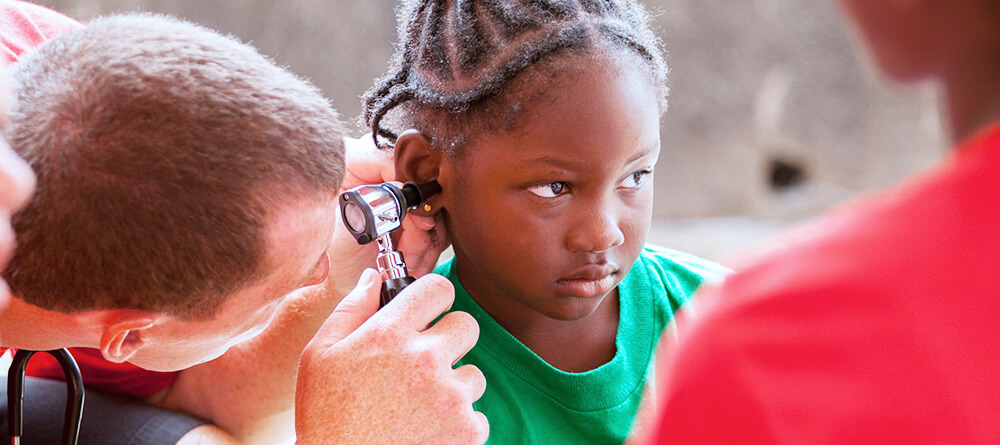After you enroll in medical school, you’re likely to be pondering what kind of physician you want to be. For students who are passionate about working with babies, children, or teens, becoming a pediatrician might be at the top of the list of choices. ccording to the 2020 AAP Annual Survey of Graduating Residents, 95% of graduating pediatric residents say they would choose pediatrics again.
We have assembled information on the steps needed to become a pediatrician or enter pediatric surgery to help you identify each of the major steps..
What is a pediatrician doctor?
According to the pediatrician definition offered by the American Academy of Pediatrics (AAP), these physicians address the mental, physical, and social health of children from birth through adolescence. In addition to providing guidance related to healthy growth and development, pediatricians also diagnose and treat a wide range of illnesses. Pediatricians also work diligently to support families’ efforts to create a nurturing home environment that ultimately ensures children’s needs are being met.
To appropriately assess and diagnose young people, anyone pursuing a pediatrician career must be able to work effectively with children and their adult guardians. Managing the fear, vulnerability, and anxiety that parents feel when their children aren’t feeling well requires excellent communication and empathy.
Pediatricians can choose to work in primary care or focus on a specific subspecialty such as pediatric surgery. Regardless of their specific focus, the AAP notes, pediatricians act as consultants and also collaborate with other physicians and health care providers.

7 Steps to Becoming a Pediatrician
Now that you have a clear idea of what the job entails, you’re probably eager to learn how to become a pediatrician. You might even wonder, “How long does it take to become a pediatrician?” As you’ll soon see, it can be anywhere between 7 and 15 years depending on where you are in your journey.
1. Obtain a bachelor’s degree
To apply to medical school, you must first complete your undergraduate studies. It’s worth noting that there is no “right” major. While most med school applicants have a degree in a science concentration, you can study any subject so long as you focus on getting good grades in courses that are part of the med school admission requirements.
2. Take the MCAT & Apply to Medical School
If your plan is to attend medical school right after college, you’ll want to start preparing for early by studying for and taking the Medical College Admission Test (MCAT) while completing your bachelor’s degree.
Most students complete the application process through the American Medical College Application Service (AMCAS), Canada’s Ontario Medical School Application Service (OMSAS), or specific school websites. They all have similar requirements. In addition to taking the MCAT, you’ll need to provide transcripts, letters of recommendation, a personal statement, and more.
While good grades and a strong MCAT score are important, rest assured that there are many factors medical schools take into consideration. Your life experience and history of accomplishments as an employee, volunteer, and student may also carry a lot of weight. Medical schools look for certain core competencies that help demonstrate your preparedness for becoming a physician, including:
- Cultural competence
- Teamwork
- Critical thinking
- Resilience and adaptability
- Scientific inquiry
- Human behavior
- Ethical responsibility to self and others

3. Graduate from medical school
After your hard work has earned you a spot in medical schoolyou will attend lectures and complete labs in a variety of subjects like anatomy, physiology, biochemistry, pathology, pharmacology, and behavioral science during your first two year.
In the final two years of medical school, you will get to work directly with patients during clinical rotations. These experiences allow you to gain exposure to an array of specialties like surgery, internal medicine, obstetrics and gynecology (OB/GYN), psychiatry, family practice, and pediatrics.
5. Begin the licensure process
You must become licensed to legally practice medicine in the US. Students typically fulfill this requirement by taking the three-part United States Medical Licensing Examination (USMLE) series. Plan to start early because you’ll want to take the USMLE Step 1 near the end of your second year. You’ll complete Step 2 during your fourth year then finish with Step 3 during residency.
6. Apply for and complete a residency in pediatrics or surgery
As medical school draws to a close, you’ll want to apply for a pediatric residency position. Pediatric residency typically lasts three years, but your training may take longer if you choose to further specialize in an area like pediatric cardiology or pediatric emergency medicine.
If you are interested in pediatric surgery, you will need to complete five year of adult surgery training before an additional two year of fellowship training in Pediatric Surgery.
For Pediatric residents, it’s common to start around 5:30 in the morning. St. George’s University (SGU) graduate Dr. Karolina Petro is chief pediatric resident at Goryeb Children’s Hospital in New Jersey, and she outlines a typical day. According to Dr. Petro, a typical day usually entails receiving reports from the night team and going over specific cases. The rest of the day is spent making rounds, speaking with patients and families, performing procedures, attending lectures, and learning from senior doctors.

6. Become board certified
After completing a three-year residency program, pediatricians are eligible to pursue board certification. While this credential isn’t necessarily required, it demonstrates that a physician has gone above and beyond state licensing requirements. To achieve this designation, pediatricians must pass the rigorous exams administered by the American Board of Pediatrics. To remain certified, pediatricians must complete continuing education requirements throughout their careers.
If you choose a path of Pediatric Surgery, that means that you will need to become certified for the American Board of Surgery in both General Surgery and Pediatric Surgery.
Pursue a career in pediatrics
Now that you have a better understanding of how to become a pediatrician and the alternate route for pediatric surgery, you might feel eager to get started. But before you can pursue this specific field, you first need to get into medical school. Give yourself the best possible odds of receiving an acceptance letter by heeding the advice in our article “5 Ways to Strengthen Your Medical School Application.”
Ready to start your medical school journey?
Are you considering St. George’s University Medical School? If you need any more convincing, just reach out to some graduates or current students. They’re happy to tell you what their experiences were like.
If you feel like SGU could be the right medical school for you, take the next step. Continue your research by visiting our request information page.
This article was originally published in March 2021. It has since been updated to include information relevant to 2023.

